Getting the War Out
New Paradigms for Healing Post-Traumatic Stress
Post-Traumatic Stress Disorder is seen most dramatically in soldiers returning from war, but is prevalent also on the home front and among all people, to some degree, who have experienced physical or emotional pain in their lives. The trauma does not need to stay locked in the body. It can be resolved through natural therapies, explained here.
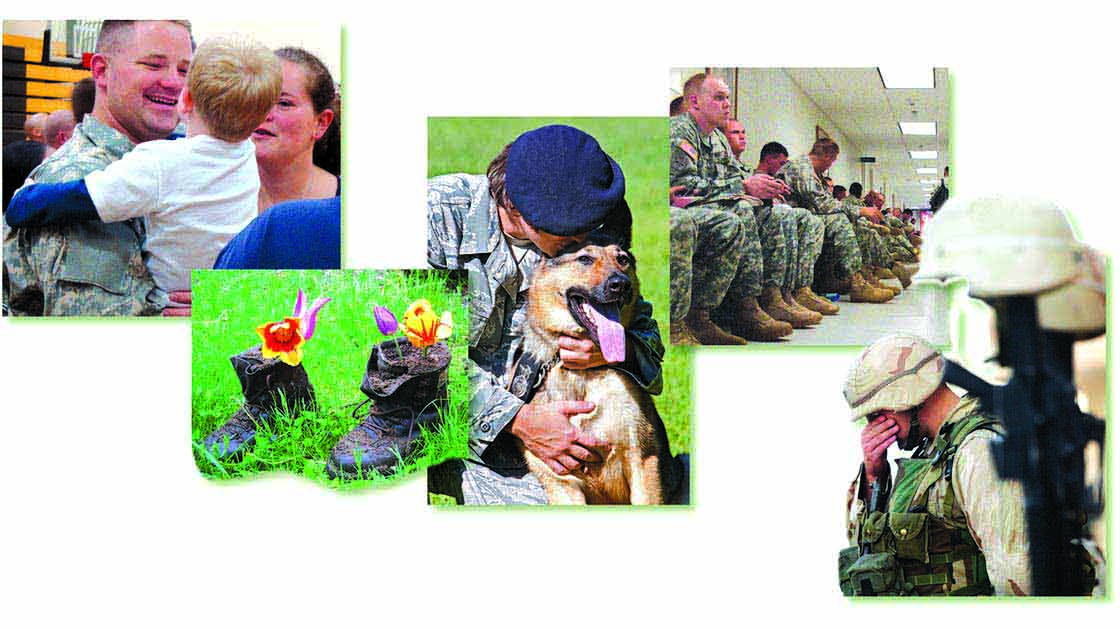
 I feel like people with my symptoms are becoming the majority of the Army. Feeling anxious when you don’t have to, being depressed and unableto enjoy things, not sleeping well—this is the new normal for those of us who’ve been repeatedly deployed.
I feel like people with my symptoms are becoming the majority of the Army. Feeling anxious when you don’t have to, being depressed and unableto enjoy things, not sleeping well—this is the new normal for those of us who’ve been repeatedly deployed.
Army major who started taking antidepressants and sleep meds after his 2nd tour in Iraq. —New York Magazine
Table of Contents
Introduction
Welcome home!
The battles you’ve been through in the military may have caused havoc within your nervous system. This is healable and reversible with the right kind of attention and therapies. If I had a troubled returning vet in front of me, these are some of the bottom-line things I would say to him.
A new battle for your own sanity and wholeness has begun. You are a human being seeking wholeness now, actually like the rest of us. It’s not just a “problem” for the V.A. to solve. The V.A. and unfortunately, most of the medical establishment, may not be equipped to get to the core and solution of this dilemma for you. Traditional chemical and group-talk therapies may help, and can take the edge off, but drugs will deaden you in the long run, and mask the underlying issues, rather than deeply resolving them.
A new battle for your own sanity and wholeness has begun. You are a human being seeking wholeness now, actually like the rest of us. It’s not just a “problem” for the V.A. to solve. The V.A. and unfortunately, most of the medical establishment, may not be equipped to get to the core and solution of this dilemma for you. Traditional chemical and group-talk therapies may help, and can take the edge off, but drugs will deaden you in the long run, and mask the underlying issues, rather than deeply resolving them.
Remember your nutritional support and give yourself the nutrient-dense green foods that you need to recover. The amino acid Tryptophan is very likely missing from your diet (a serotonin precursor). Get that into your body from foods that are rich in ALL the amino acids, like the leaves of the moringa tree, spirulina, or blue-green algae.
If you’ve been on Prozac, or other antidepressants called serotonin reuptake inhibitors, remember that these only “reroute” your already low serotonin to feed the brain with the well-being feelings that this amino acid provides (a layman’s, not a biochemist’s, explanation). But be very careful not to go off these drugs cold turkey. You can find yourself bankrupt of serotonin and may become suicidal or homicidal. (The statistics are there and it has happened to friends of mine.) Find a qualified health practitioner who can guide you.
Educate yourself. The solutions are learnable and doable. Your brain is stuck in a primitive state of “fight or flight” because of the trauma you faced. Your autonomic nervous system needs to be reset, reorganized and refreshed. The limbic/survival brain needs to get reintegrated with the pre-frontal cortex. Talking this through and/or drugs won’t accomplish this, but there are natural therapies that can. Breathwork is one of them. EFT (Emotional Freedom Technique) and RET (Rapid Eye Technology) are two others. These are tried and true, but probably won’t be covered or even recommended by the V.A.—but you can pursue them yourself. They are not expensive. There are therapists wanting to help you. You must seek and ask.
 Watch the movie, “Harsh Times,” with Christian Bale (2006, one of his best performances as a melting-down, returning vet)... and weep. Be careful to NOT get restimulated as you watch this. DON’T GO where this character went! You owe it to yourself and your family to find a way to renew yourself.
Watch the movie, “Harsh Times,” with Christian Bale (2006, one of his best performances as a melting-down, returning vet)... and weep. Be careful to NOT get restimulated as you watch this. DON’T GO where this character went! You owe it to yourself and your family to find a way to renew yourself.
Visit TraumaHealing.org by Peter A. Levine, Ph.D., the developer of Somatic Experiencing®. He is a true pioneer in the understanding and resolving of PTSD. Somatic means “in and of the body.” Your issues are very physical, not just “in your mind,” as some would try to tell you.
Remember that you’re not alone and trauma comes to many of us and not just from war. Plenty of civilians, especially women, have experienced it too. If you find yourself being abusive to yourself or your loved ones, stop now and call for help. Please remember that alcohol, especially along with drugs, is a poison, not a friend.
Watch the movie, “Harsh Times,” with Christian Bale (2006, one of his best performances as a melting-down, returning vet)... and weep. Be careful to NOT get restimulated as you watch this. DON’T GO where this character went! You owe it to yourself and your family to find a way to renew yourself.
Visit TraumaHealing.org by Peter A. Levine, Ph.D., the developer of Somatic Experiencing®. He is a true pioneer in the understanding and resolving of PTSD. Somatic means “in and of the body.” Your issues are very physical, not just “in your mind,” as some would try to tell you.
Remember that you’re not alone and trauma comes to many of us and not just from war. Plenty of civilians, especially women, have experienced it too. If you find yourself being abusive to yourself or your loved ones, stop now and call for help. Please remember that alcohol, especially along with drugs, is a poison, not a friend.
This inner battle for wholeness is the greatest challenge and achievement for any of us. You just got the crash course, but don’t let it crash you! It may require going against your training by asking for help, being vulnerable, and releasing, in the safety of the right support systems, including family, vets’ recovery programs, and health practitioners. It may require stepping out from under the V.A.’s wing, and searching for answers where they are unable to go—into spiritual and emotional areas of life. It’s a grand journey, requiring just as much courage as what you’ve already shown that you have.
Resources are available, as I’ve outlined in the following article. Thank you for serving freedom and our country. As a Navy vet myself... I salute you!
— Denis Ouellette, BA, BS, LMT, OBDS
What Is PTSD?
Not many of us get through life without bumps, grinds and dents along the way. They say that stress becomes trauma when the injury takes up residence—when an event was so overwhelming for us that we can’t seem to recover from it. We think of soldiers coming back from war, but some of that war never seems to leave them.
As a bodyworker and breath-worker, I’ve worked with releasing stress and tension from bodies for 30 years. I’ve learned to trust the body’s ability to self-heal, and that many problems that seem mental and emotional, are locked and blocked in the body’s cells and nervous system too. They say that 75% of the time, doctors can’t find anything wrong when patients come to them with complaints. They call this psychosomatic, i.e., “it’s all in your mind.” Yet stress and the effects of trauma are often the cause, and mind-oriented talk therapies, and/or psychoactive drugs, have produced less-than-complete results in many cases. Let’s examine emerging natural therapies, and new paradigms for under-standing the key role that somatic experience (trusting the body’s innate self-healing powers) plays in resolving the effects of trauma.
I was giving a lady from the east coast a massage recently and we got to talking about her son, who recently returned from Iraq. “I wish you could work on my son,” she said, “that Walter Reed Hospital patched up his wounds but didn’t do a thing for his psyche... Boy, does he need anger management!”
I also worked on a psychiatrist from a major-city veteran’s hospital and I asked him what they do there for PTSD (Post-Traumatic Stress Disorder). He admitted that their approach was not enough, mostly using drugs and group therapy. He talked about how when there is shock or trauma, the neuropeptides (transmitters in the brain and nervous system) get frozen. Locked “at the scene of the crime,” so to speak, replaying the event, or “stuck in emergency mode,” which is the body’s fight-or-flight response, and unable to unwind and re-balance, resulting in the many, complex symptoms of PTSD: flashbacks, hypervigilance, dissociation, memory loss, and a disconnect from parts of the body, avoidance of restimulating experiences.
I also worked on a psychiatrist from a major-city veteran’s hospital and I asked him what they do there for PTSD (Post-Traumatic Stress Disorder). He admitted that their approach was not enough, mostly using drugs and group therapy. He talked about how when there is shock or trauma, the neuropeptides (transmitters in the brain and nervous system) get frozen. Locked “at the scene of the crime,” so to speak, replaying the event, or “stuck in emergency mode,” which is the body’s fight-or-flight response, and unable to unwind and re-balance, resulting in the many, complex symptoms of PTSD: flashbacks, hypervigilance, dissociation, memory loss, and a disconnect from parts of the body, avoidance of restimulating experiences.
Typical PTSD Symptoms
Abrupt mood swings, e.g., rage reactions or temper tantrums, shame
Addictive behaviors (overeating, drinking, drugs, etc.)
Amnesia or forgetfulness
Attention difficulties: ADD, ADHD, etc.
Attraction to dangerous situations
Avoidance behavior (avoiding certain circumstances and phobias)
Chronic fatigue or very low physical energy
Constriction (tightness in body parts)
Compulsion to re-enact actions or circumstances that mirror the trauma
Depression, feelings of impending doom
Difficulty sleeping
Diminished interest in life
Dissociation (including denial)
Exaggerated emotional and startle responses
Exaggerated or diminished sexual activity
Extreme sensitivity to light and sound
Fear of dying, going crazy, or having a shortened life
Feelings and behaviors of helplessness
Feelings of detachment, alienation, and isolation—“living dead” feelings
Fibromyalgia or skin disorders
Frequent crying
Hyper-vigilance (being “on-guard” at all times)
Hyperactivity or hyper-arousal
Immune system problems or certain endocrine problems, i.e., thyroid mal-function or environmental sensitivities
Inability to love, nurture, or bond with other individuals
Inability to make commitments
Intrusive imagery or flashbacks
Loss of sustaining beliefs (spiritual, religious or interpersonal)
Mental “blankness” or “spaciness”
Nightmares or night terrors
Panic attacks, anxiety or phobias
Psychosomatic illnesses, particularly headaches, neck and back problems, asthma, digestive, spastic colon, or severe premenstrual syndrome
Reduced ability to formulate plans or goals, living “hand-to-mouth”
List compiled both from www.OptimalBreathing.com2 Copyright © 2007, 2023 by Michael Grant White, and from Healing Trauma, by Peter Levine, Ph.D.
If not resolved, coping with trauma can evolve into bouts with depression, anxiety and addictions. This doctor talked about how the Alpha or Beta blockers commonly used for PTSD can blunt the memory and block the release of excess hormones (adrenaline, cortisol); but still, he said, “you’ve got to get the feelings out.”
We talked about how the frontal cortex of the brain doesn’t fully develop until the age of 28. That’s the rational brain, responsible for long-range planning, global thinking, and “fuzzy logic,” which is the ability to consider a host of variables, and how sad it is that soldiers (and other young trauma victims) may have this brain-maturation process interrupted. It reminded me of the statistic that 40% of the homeless in this country are Vietnam vets, with brains only capable of living in “survival mode.” Back in the 70’s, there was no PTSD diagnosis and little understanding or resources for soldiers returning from an unpopular war.
Dr. Peter A. Levine’s Pioneering Work
 Now let’s look at how trauma-healing pioneer, Dr. Peter Levine, a psychologist and world leader in the somatic approach to trauma, describes the brain. We humans have three functioning parts of the brain, two of which we share with the animal kingdom. The survival brain, located in the lower rear, is sometimes called the reptilian brain and is our instinctual brain. From this part of the brain, life is viewed as either black or white, yes or no, friend or foe. Life is also only about needs in the present, i.e., “hand-to-mouth.” This brain takes over in times of extreme stress.
Now let’s look at how trauma-healing pioneer, Dr. Peter Levine, a psychologist and world leader in the somatic approach to trauma, describes the brain. We humans have three functioning parts of the brain, two of which we share with the animal kingdom. The survival brain, located in the lower rear, is sometimes called the reptilian brain and is our instinctual brain. From this part of the brain, life is viewed as either black or white, yes or no, friend or foe. Life is also only about needs in the present, i.e., “hand-to-mouth.” This brain takes over in times of extreme stress.
With all mammals we share the mammalian brain, located in the center, which drives emotional bonding with others, caring for our young, etc. Only humans have the frontal cortex, the higher reasoning brain. Our three brains work together as an integrated whole when there is homeostasis, i.e., a fluid balance of communication and coordination. Dr. Levine describes how, when trauma occurs, the survival brain takes over and then, because of the overwhelm, is unable to reconnect and reintegrate with the other two. He describes how small animals have life-threatening experiences from predators all the time and recover quickly, but for us humans, it is the rational brain that blocks the reprocessing.
Why?
The energy that is marshalled in a life-threatening or powerfully stressing experience is huge. Think of the mother being able to lift a car off the legs of her child. When neither “fight” nor “flight” are viable options, the body moves into “freeze.” Think of the immobility response of the opossum and other prey animals. When we humans start to move out of this frozen state, we are often frightened by the intensity of the energy that needs to be released, whether it’s anger, retribution, shame, judgement, or grief.
The rational mind blocks the discharge of these feelings out of the fear that it will be out-of-control, and someone may get hurt. This stalemate becomes a “cold war” between the parts of our brain where the cure and the resolution itself are at odds. The good news is that with proper guidance we can employ simple techniques that are safe and gentle to shake off the trauma of overwhelming events, and unravel the complex mass of symptoms and coping mechanisms.
Here are Dr. Levine’s comments, using the tribal nations as an example, about the lack of the community spirit in today’s society. How many of us even have a sense of fellowship with the people in our own neighborhoods?
The Hopi Nation
 In Anglo-European cultures, it is the needs of the autonomous ego that dominate perception. In the Hopi cultures, it is the needs of the tribal community that are primary. The Hopi are not alone in this worldview. In many aboriginal cultures, the entire group shares the pain of an injured individual. Because of this felt connection, the healing of a single person naturally becomes the responsibility of the entire group. Specific rituals are performed involving the whole community. The Hopi say that if trauma is not dealt with quickly by the whole group, then its negative consequences will affect the tribe for seven generations.
In Anglo-European cultures, it is the needs of the autonomous ego that dominate perception. In the Hopi cultures, it is the needs of the tribal community that are primary. The Hopi are not alone in this worldview. In many aboriginal cultures, the entire group shares the pain of an injured individual. Because of this felt connection, the healing of a single person naturally becomes the responsibility of the entire group. Specific rituals are performed involving the whole community. The Hopi say that if trauma is not dealt with quickly by the whole group, then its negative consequences will affect the tribe for seven generations.
What happens to cultures whose sole focus is self-involvement and autonomy? What lies in store for countries made up of isolated individuals who have little feeling for being a “people”? They become, as we have, particularly vulnerable to the disconnection that results from traumatic experiences.
—Peter A. Levine, Ph.D.
Dustin Fox’s Testimonial
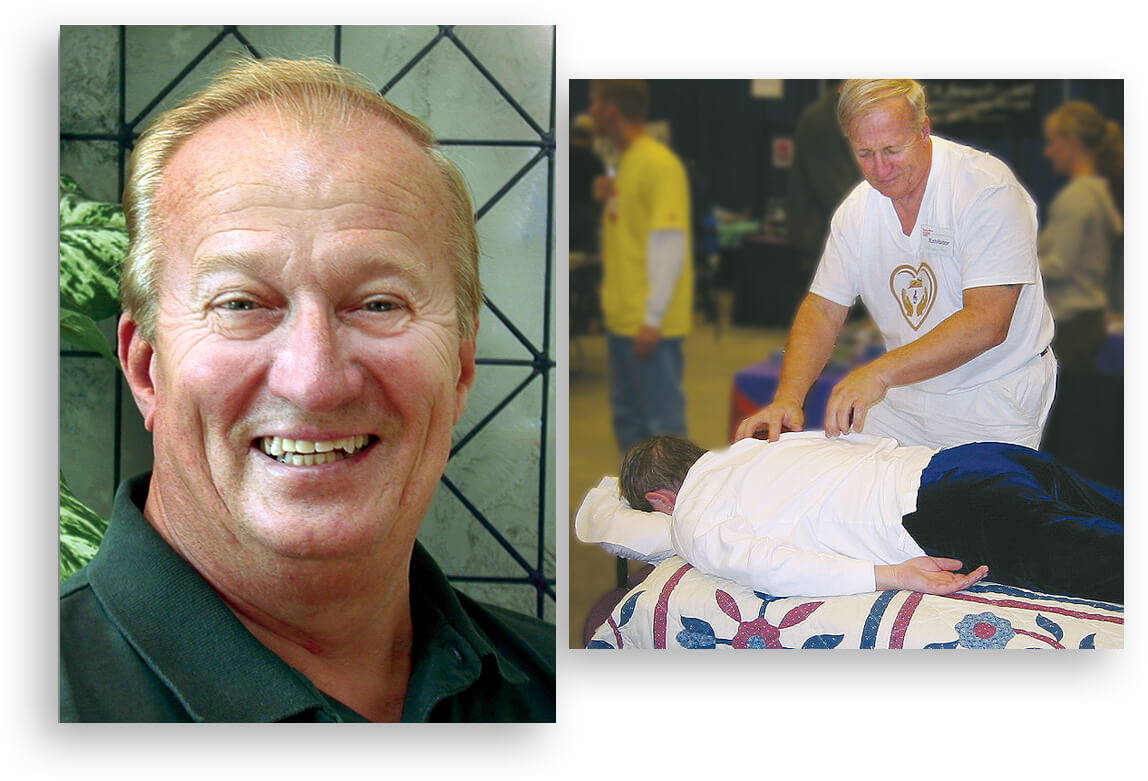
My friend Dustin is a Vietnam vet and as a young man, went through just about the worst that a war can dish out. For over 25 years, he dealt with the gnawing memories, the depression, and various addictions. Also, a massage therapist, he could lose himself by de-stressing others, but hadn’t found a way to heal himself of his past experiences of war—until breathwork.
He came to six of our seminars and watched the trauma roll off as we introduced incremental openings in his breathing pattern and supported his body’s discharge and reorganization. As a healer himself, he knew how to go with it, and trusted his body’s process. You can read his story and many other testimonials on the testimonials page here, at www.IntegralBreathwork.com.
Dustin practices breathwork every day—not for trauma discharge as this has totally left his body—but for oxygenation and detoxing, to stay energized and clear. At a recent checkup at the veteran’s hospital, the doctors said he has the biological make-up of a 47-year-old—he’s 64. He regularly does mini-massages all night long at cancer walk-a-thons. That’s his idea of fun.
Here is Dustin’s Testimonial in his own words, reprinted from “Heal Yourself with Breath, Light, Sound & Water.”
Releasing Vietnam PTSD • Dustin Fox, CAMT
My name is Dustin and I am an Acoustical Massage Therapist. My first exposure to breathwork was during a massage I was giving to Denis Ouellette. He was breathing differently than anyone I had ever seen before. His inhales were deep, and his exhales were full and completely emptied his lungs. I had never studied breathing but was fascinated by this self-cleansing approach. I signed up to attend his seminar. I noticed that several essential health issues were being addressed. As a therapist, I was fascinated by the facts presented as to how we could breathe optimally to facilitate better health and well-being.
In the next few months, I attended four seminars and felt better after each one. But there were deeper issues that I needed to address that had settled into my very soul. It was during my fifth seminar that I felt this would be the day to identify and release whatever it was that was holding me in such turmoil. Following the instructions and breath measurement exercises, we partnered with someone for goal setting. With safety and honesty, we shared the issues that we wished to address during our session. I realized it was time to heal my remaining Post Traumatic Stress Syndrome from Vietnam, over 35 five years ago. These “cellular memories” were still holding me in a depressed state and draining me of my health and spiritual contentment.
As we began to breathe, I felt a stiffness set in throughout my body. The cramping in my hands began to get a bit intense. A facilitator came over and assisted me through the process. As I allowed myself to relax and breathe through the memories of pain and trauma, they left me. It took one more session for this to be complete. At one point during that sixth one, Denis said he was concerned about me because I looked as gray as a ghost. I think death itself was leaving me! I now feel content and cleansed of that trauma and depression. I have now attended twelve breathwork seminars, and am very proud to be a facilitator.
P.S. Blood Tests. Last year, before I began breathwork, I was advised by my physician to get a blood test as part of my annual checkup. I was surprised to see that my blood cells were not round. The test also revealed that they were clustered together and misshapen. I was advised that this causes a reduction in the ability of the circulatory system to do its job of delivering oxygen and nutrients to the body, while removing waste products. The doctor said this condition has an effect on my liver, kidney, brain and heart function. Healthy blood cells are supposed to float free and should be almost perfectly round. The advice was to modify my diet, to reduce sugar and fats, to exercise, and most importantly, to improve my breathing.
About ten months later, after five breathwork seminars and plenty of breathwork on my own, I returned for another blood test and was gratified to see that my sickly-looking, large blood-cell clusters were all but gone. The blood was rich with oxygen. Other tests showed that my organ function was within a normal range. I did make small changes in my diet, and I do some light exercises, but doing the breathwork regularly is what brought my cells back to life.
“Wounded Warriors” by Colin P. Sisson
Now, let’s detour into some book excerpts from Wounded Warriors, by Colin P. Sisson, and learn from his remarkable experience using “Rebirthing,” which evolved, in the proceeding decades, into other healing modalities under the general banner of “Breathwork.”
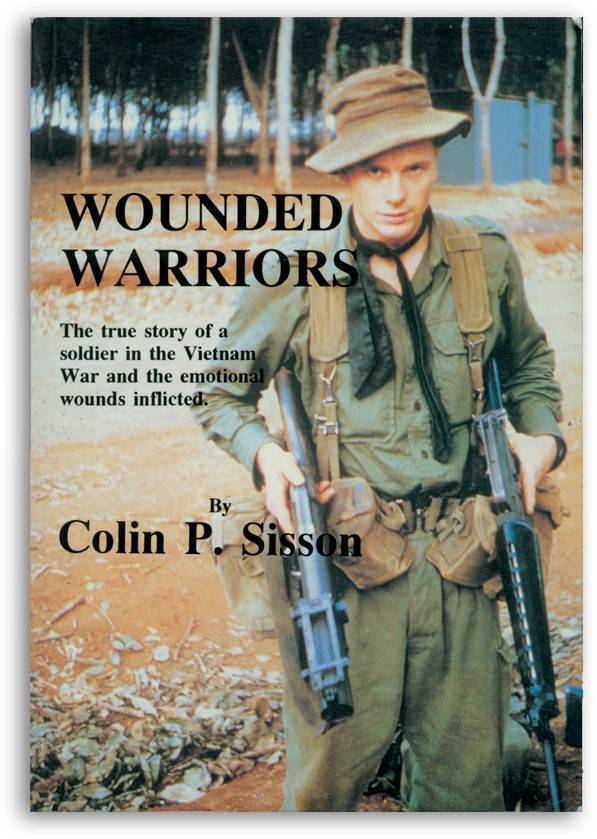
[Upon first arriving home from Vietnam in 1967...]
I woke up bathed in sweat, feeling totally disorientated and not knowing where I was. It had been that same nightmare that I had been having every night for over a month… Since those dreams started, they had been getting steadily worse and I was starting to think that I was going crazy…
Mum came up to me and stood behind me, then wrapped her comforting arms around me. “Welcome home, son. I’d like you to know that whatever’s going on inside of you, I’m always here for you. You don’t have to talk about it. Just know that you are safe at home. I choked back the tears that demanded expression. She cried for me instead, at the same time telling me that, if I wanted to, it was okay to cry too. Her assurance was in vain, for I had a deeply rooted belief that, if I were to survive, I had to keep my feelings under control.
The next day was spent shopping sand sightseeing in Auckland. While walking along the street, a car suddenly backfired; the next thing I knew I was looking out at Mum from underneath another vehicle that was parked. She was staring at me, with her head tilted to one side. “Are you all right son?” I pulled myself from under the car, stood up and brushed the dust from my jacket. I smiled weakly at her and at several curious passers-by.
“Sure, just keeping my reactions in trim,” was all I could think of…
Six months after leaving Vietnam, I was still having nightmares about the war, but by that time I was able to suppress any screams at the point when I woke up. This self-control saved me from having to make embarrassing explanations to my concerned family about the state of my mental health.
[Now 25 years later, Colin is a breathwork facilitator and trainer...]
In the twenty-five years since my return from Vietnam I have experienced many radical changes in my life. The most significant was probably, that I gave up my need to regard each potential female partner as a surrogate mother. Secondly, I worked hard at building my self-esteem…
On July 7, 1992, I left New Zealand for Russia, where I had been invited to run a training course for therapists and aspiring practitioners of the technique of Breath Integration. This was my new—and I felt, more appropriate—name for rebirthing. It had been arranged that I would give my services for free, as a contribution to an emerging nation in need of help from the West.
As I came down for breakfast, Eva said, “I think you need to breathe, Colin.” Her sharp eyes and intuition missed nothing. “No. I’ll be okay in a few hours.” My reply did not fool Eva. “I’ve known you long enough to know when you are avoiding something important. Come on, I’ll rebirth you.”
During the next two hours, I exploded with anger and then cried like a wounded baby, digging deeply into my subconscious and discovering emotions I had long forgotten. In the end, I surrendered totally, and felt joy and the profound relaxation that follows a breath integration session. The healing I received related to the battle in operation Coburg when I had dysentery. In some way, the upcoming-training course, even though I was conducting it, had reactivated that memory both mentally and physically, from all those years before.
[When conducting this breathwork training, Colin finds that one of his Russian students was among his enemies in Vietnam...]
I was stunned, suddenly and without warning, I was looking across the room at someone who was my former enemy. Feelings about the war welled up strongly and it was several minutes before I was able to speak. There was neither hostility nor love, only memories. Everyone in the room felt the energy between us as we looked at each other. Neither of us knew what to do with the feelings that were arising, but mercifully, someone rescued the situation by asking a question about an aspect of breathing and its relationship to mental health and the lesson continued.
Later in the afternoon, the ex-Russian soldier had a breathing session that brought up issues from twenty-five years earlier when he had been serving in war-torn Vietnam. He exploded angrily, then cried like a hurt child for nearly half an hour. I knew exactly what he was going through, as I had been in a very similar session only days before. Gathering myself, I went over and sat beside him. Then I wrapped him in my arms, held him like a baby and gently rocked him, feeling the pain slowly leave his body.
Many of the students in the class broke down and openly wept at seeing two former enemies now united as brothers. I was unaware of the commotion in the room, being fully involved with a man whom I could never again hate, for whom I could only feel total love. It was a moving experience for everyone, but no more so than for me and my new Russian brother.
It seemed that I had found why I’d come to Russia: to heal and be healed, afterwards my new friend hugged me and wept from joy. Then, looking straight at me, he spoke in a torrent of Russian, too fast for me to understand a single word or even for my interpreter to translate. It was not necessary though. The message of love and brotherhood was unmistakable. ■
—Colin P. Sisson
Switzerland’s Dr. Joy Manné
So, trauma is not an incurable disease and its effects (PTSD) don’t have to be a life sentence. Medications can be helpful and necessary in some cases, but drugs involve manipulating and disabling biochemical switches in the body that can hamper the healing on deeper levels. Traditional group or private talk therapies can be lengthy and expensive and “telling the story” can have limited results if real discharge and reintegration are not happening.
Dr. Levine’s Somatic Experiencing® techniques (visit www.traumahealing.com), and the breathwork approaches of psychotherapist Joy Manné (visit JoyManne.org) and others, trigger various body changes, called discharge, which are key for trauma resolution through body and brain reintegration. These phenomena can include tingling and trembling, spontaneous full-body breathing, body temperature shifts (usually from cold to warm sweating), and can involve emotional release and verbal discharging—all signs that the body’s frozen fight-or-flight response is thawing. Levine uses a progressive series of imagined exposures related to the trauma, with a careful watching and managing of the body’s “felt sense” reactions.
Here, Joy Manné describes her approach with a client, as follows:
“The method I used was to teach him to breathe deeply into his belly and to slow down his breath. I had him place his hands on his belly, one higher than the other so they did not overlap, to increase the area of sensation, and instructed him to breathe into your hands, so that you can feel your breath caress your palms.” When the breath is slow and deeply abdominal, grief [or anger and restimulation] will not get out of control… Once I am convinced that a client is sufficiently grounded and aware for us to start breathwork, all I do is ask the client. “Put your attention on your breathing and tell me what happens.” The client is to give a phenomenological account, describing bodily feelings and breathing rhythms and when they change. Thoughts and ideas are included in this phenomenology. The attention to precision and detail inherent in this technique slows the process and enables dealing with each feeling and sensation as it comes up. Starting like this means that the client is doing a lot of talking in early breathwork sessions and I am doing a lot of listening and responding.”
Michael Grant White, Founder of OptimalBreathing.com
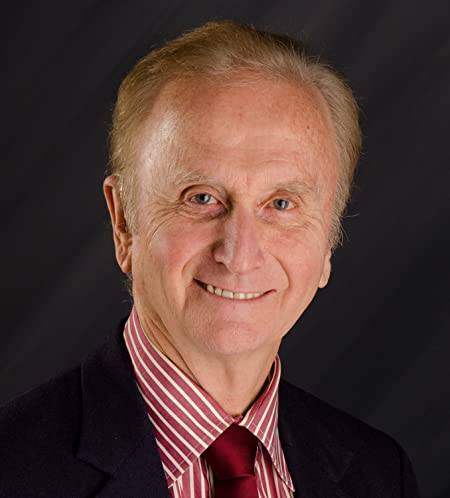
Michael Grant White is among the voices cautioning against any high-energy therapy that is aggressive in eliciting cathartic discharge, especially with trauma victims. Some of the early forms of breathwork encouraged high-chest hyperventilation (rather than gentle diaphragmatic breathing), or paid no attention to breathing-pattern assessment, correction and improvement before therapy. These approaches can result in “too much coming up too fast” and can retraumatize. A wise saying common among the evolving uses of this therapy is: “You don’t push the river!”
Here are Mike White’s words:
“Self-determinism is almost always the key to lasting results. Daily practice of proper breathing is where I believe we should direct everyone for balance, grounding, and accelerated emotional stability. The therapeutic environment should be used for breakthrough work, spiritual principles, practical solutions, and to train, monitor and reinforce daily breathing practices. I have used mostly gentle techniques and exercises and have purposefully avoided the high-intensity, cathartic styles. I am trained in them and I rarely use them. Inasmuch as the unbalanced breath can result in emotional confusion and overall convoluted energy management, I feel strongly that the professional therapist should know how to develop the breath in the fastest, safest, most grounding, and centering way possible.”
Mike White trains therapists at his online programs at OptimalBreathing.com. He and I have collaborated to develop Integral Breathwork™, a bringing together of physiological breathing improvement with transformational breathwork.
In the well-worth-reading book, Body, Breath, & Consciousness, Drs. Levine and Macnaughton offer the following advice:
“Attention to the pattern or type of breathing displayed by a client can provide useful information for the therapist... Intervening in the client’s breathing pattern can be useful in moving the client toward self-regulation and a sense of wholeness... Particular cautions need to be kept in mind when there is any evidence of shock or trauma, medical conditions, or dissociative issues.”
Are Drugs the Answer?
Now let’s look at a few of the other emerging, natural approaches to the healing of trauma, some involving neurological reprogramming, others working with the unblocking of energy, such as EMDR, RET and EFT. Still others work with repatterning of beliefs, such as Constellations work and Psych-K. (See below for additional stories and definitions of these therapies.)
I spoke recently with another psychiatrist, Dr. S. Robert Martin, himself a Vietnam vet, who has switched from traditional talk therapy, where it typically took 3–4 years of once-a-week sessions to resolve PTSD symptoms, to EMDR therapy, where he is seeing resolution in 3–4 months (for trauma or abuse victims), and even 3–4 sessions for less severe cases (auto accidents). Dr. Martin mentioned that, although EMDR is the treatment of choice by the Veteran’s Administration and the Red Cross, he has made attempts to work with veterans’ hospitals and insurance companies to get EMDR covered for vets and has met resistance, so for now he sees patients privately. He also introduced me to Dr.
Breggin’s books on the harmful side effects of drugs for depression and trauma. (See Recommended Reading.)
As you review the stories and descriptions with this article, you’ll see that the methods described do not involve a retelling or reliving of the original traumatic experience. (Some will involve discharge and emotional release, while others do not.) In his article, “Nature’s Lessons in Healing Trauma,” Dr. Levine relates: “I learned that to heal trauma, it was not necessary to dredge up and relive memories. In fact, severe emotional pain can be re-traumatizing. What we need to do to be freed from our symptoms and fears is to arouse our deep physiological resources and consciously utilize them. If we remain ignorant of our power to change the course of our instinctual responses in a proactive rather than reactive way, we will continue being frozen, imprisoned, and in pain.
The tacit acceptance of drugs as the answer to this epidemic is frightening as well as misleading. These so-called disorders are not diseases like pneumonia or juvenile diabetes. Why are we not profoundly disturbed by the creation of future generations of chemically-dependent citizens? Will America become known as the “Prozac® nation,” unable to function without mood elevators and anti-depressants? Perhaps this situation already exists.
Trauma is about broken connections. Our connections with the body/self, family, friends, community, nature, and spirit have been broken, perpetuating the downward spiral of traumatic dislocation. Healing trauma is about restoring the connections.”
Natural Therapies for PTSD
Integral Breathwork™

A pioneering combination of Optimal Breathing® Work, with assessment, correction and improvement of the breathing mechanics and physiology, followed by Transformational Breathwork for oxygenation and detoxification, balance and reorganization of the autonomic nervous system, release of stress and trauma, and gentle movement of the life-force energy. This results in the holistic clearing and harmonization of the body, mind, emotions and memories. Integral Breathwork™ was developed by Denis Ouellette. For private, group, and virtual Integral-Breathwork sessions, contact Denis directly through his website. [IntegralBreathwork.com/breathwork]
Rapid Eye Technology (RET)
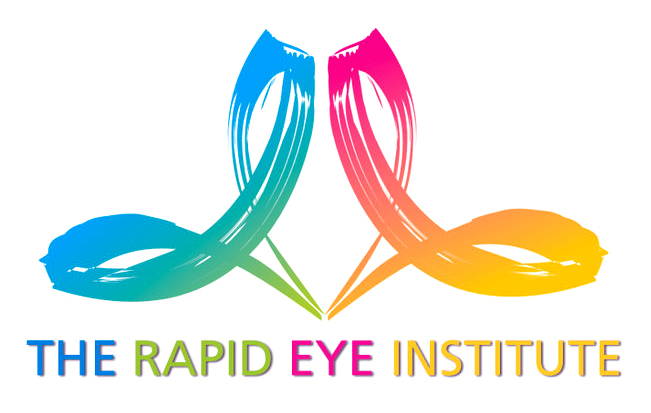
At the leading edge of personal growth today, Rapid Eye Technology (RET) is a revolutionary breakthrough in addressing emotional stress. RET is currently sweeping the nation as a faster, less painful way of reaching and releasing emotional elements of:
Abuse of all kinds
Addictions of all kinds
Depression, anger and grief
Family and Relationship Patterns
Basically, the emotional stress caused by any issue can be released, the body retrained, and the mind educated to think and react differently through the RET process and Skills for Life training. [RapidEyeTechnology.com]
My Son and RET
My oldest son is a Marine and I am a proud Marine mom. At age 21, he was sent over to Iraq for his first tour there. He was away for 7 months. When he came back to the states and was able to spend his 30 days of leave at home, I became very aware that all was not well. When darkness fell, he was absolutely haunted, and for 30 days straight, he would have to leave and go out with his friends to drink. Many nights he would not come home.
It was very sad to watch. He was a profound alcoholic and in such a state of remorse. I finally asked him about what happened over there. He began to sob and said bluntly, “I don’t remember, it’s as if I was never there. I remember leaving and I remember coming back.” How do you help a matter of the heart like this?
Sometime after this, I was referred to RET with the hope this would help my son. I found a technician in his area and signed him up. I asked my son to just do this for me on faith, as neither of us had ever heard of it. After only five sessions, a profound change had occurred, evident as he began to spend weekends fishing or with family and friends.
He was able to sleep at night.
His second tour to Iraq came quickly and I was very glad to see such healing had occurred before he left. I honestly believe the RET saved my son’s life, for if he had gone to Iraq on that second tour in the same shape he was when he came home from the first, I am not sure he would have lived through it. During his second tour to Iraq, he called aunts, uncles and grand-mas, very much more connected than before. I am grateful every day for the RET and what it did for my son and our family.
— Jacque Chapman
Eye Movement Desensitization & Reprocessing (EMDR)
EMDR is a psychotherapy treatment that was originally designed to alleviate the distress associated with traumatic memories. Shapiro’s Adaptive Information Processing model posits that EMDR therapy facilitates the accessing and processing of traumatic memories and other adverse life experience to bring these to an adaptive resolution. After successful treatment with EMDR therapy, affective distress is relieved, negative beliefs are reformulated, and physiological arousal is reduced. During EMDR therapy the client attends to emotionally disturbing material in brief sequential doses while simultaneously focusing on an external stimulus. Therapist directed lateral eye movements are the most commonly used external stimulus but a variety of other stimuli including hand-tapping and audio stimulation are often used.
Shapiro hypothesizes that EMDR therapy facilitates the accessing of the traumatic memory network, so that information processing is enhanced, with new associations forged between the traumatic memory and more adaptive memories or information. These new associations are thought to result in complete information processing, new learning, elimination of emotional distress, and development of cognitive insights. EMDR therapy uses a three-pronged protocol: 1) the past events that have laid the groundwork for dysfunction are processed, forging new associative links with adaptive information; 2) the current circumstances that elicit distress are targeted, and internal and external triggers are desensitized; and 3) imaginal templates of future events are incorporated, to assist the client in acquiring the skills needed for adaptive functioning. ■
[emdr.com]
Psych-K®

We are not born with PTSD, it occurs when something traumatic happens to us. In those moments of trauma, the body and sub-conscious mind instantaneously develop beliefs that are ‘downloaded’ into our biological computer. These beliefs, now imprinted on our cells, tend to override all conscious thoughts. We may be unconsciously holding beliefs that tell our body that life is not safe, or that certain persons or animals are a threat. Or, our body/mind may believe that we may be hurt when we go out of the house, or drive a car. Since our subconscious mind is much more powerful than our conscious brain, the beliefs it holds are what determine our personality and our reality. Our biological systems react to what our subconscious mind believes. So, when we are in a place that triggers this response, i.e., driving, alone in a dark place, passing a barking dog… our heart rate goes up, it becomes difficult to breathe, we begin to panic and the domino effect kicks in, and we are unable to get to a place that is safe for our body/mind.
In my personal experience using Psych-K to treat PTSD, I did not have to focus on how this all came about. I did not have to know about or restimulate what caused the problem in the first place. I only had to identify what the belief was, which was easily accomplished with muscle testing. Then, I had to determine what I would prefer instead. For example, I knew that I had a tough time being alone at night, even with the doors locked, the dog next to the bed and a gun in the nightstand. Consciously quite safe, right? Wrong! The panic would kick in and I could not rest until I got up and checked the windows and the doors again, sometimes 10 times a night! So, I made a simple statement of, “No matter where I am, I am safe and my body and mind are filled with peace and comfort.” Within a few moments of doing this PSYCH-K balance, I noticed a calm come over my body/mind. That night I slept better than I had in years. This has remained the same for over almost 2 years.
I have used this technique on clients who have experienced similar symptoms with various causes. Every time within a few balances, things are noticeably different and have lasting effects, even going so far as to (with their physicians’ direction) get off of prescription medications. This is a fast, easy, effective way to address the cause, while focusing on the future—focusing on what we want to be true. We are born with a blueprint for wellness, it is the disruptions in this blue-print that cause dysfunction, disorder and disease. It is within each of us to know what we need to heal. ■
—Amber Ashby, CSP, CMT
Systemic or Family Constellations
What is Family Constellation Therapy?
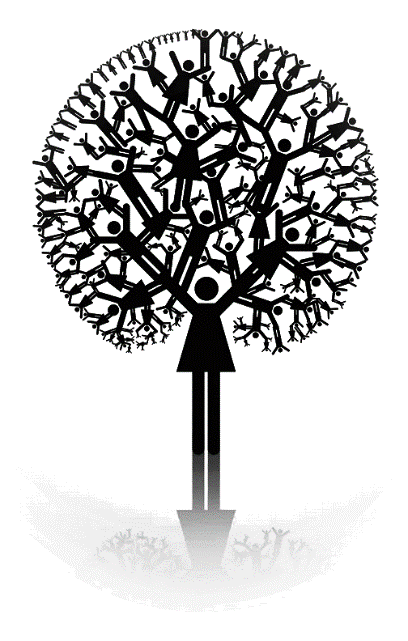
Bert Hellinger, who developed this method and philosophy from his integrations after exploring so many different healing therapies describes setting up a constellation:
“All people carry with them an energetic field or blueprint of their biological families—this field has been called by some a family soul, or family conscience. That field has an enormous unconscious effect on each family members life and all the people they interact with"
Long standing problems with health, depression, relationships, failed finances, etc. are usually a result of unconscious ‘entanglements’ in the family soul. Doing a constellation is a way to bring those entanglements to light, and to allow for some resolution to happen. Quite often after a constellation, other members of the family who were not present for the constellation—and didn’t even know it was happening–report dramatic shifts as a result. Because the family is a system—like an energetic mobile, what affects one, affects all. And what keeps one stuck, affects them all…
According to this approach, every pain, every conflict, every conquest, every joy of the members of this system, alive, dead, aborted, excluded or forgotten, is transmitted to us silently and subtly from generation to generation causing entanglements in the family system and causing difficulties and difficult destinies in some of the members of subsequent generations.■
Systemic Constellations for PTSD
Systemic Constellations, also known as Family Constellation Therapy, offers an effective way to look at traumatic events from a healing perspective without judgment. Using others to represent the people and issues involved, a healing resolution to the symptoms of PTSD can be found by finally grieving for what happened. The military teaches soldiers how to kill, not how to grieve; and frankly, there’s no time for grief in the midst of battle. For civilians, there’s no time for grief during war—survival is the only thought. But when there is time, grieving must happen in order to find peace of mind.
If a comrade or relative has died, the survivor may feel guilt that he was not able to save him, or may wish that he would have died too. He also feels anger at the ones who caused the death, which frequently includes anger at God. One way for survivors to resolve their feelings is to know they will live for a while, then they too will die and join the one who died. This gives them permission to live. Since it’s only for a while, they can accept life more easily. After a while, if they have been able to grieve, they can accept life and live it fully until it is their natural time to die.
If the trauma was caused by abuse or violence against a person, innocence has been lost and must be grieved for. Soldiers who are severely wounded will be reminded daily of what happened for the rest of their lives, as they live with the consequences. Their anger about the loss of their bodies and lives as they once were must be grieved for, and their new situations must be accepted in order to find peace. Constellations offer a way to achieve that goal.
If a soldier was responsible for the death of an innocent civilian, it is impossible to push that responsibility onto someone else, even if he was a small cog in the military machine. It simply is how it is. When the wrong is acknowledged and faced, when the victim is acknowledged as a person of equal value, respected and mourned, the terrible effects of the wrong can cease.
Peace comes after grieving, after looking at all that has happened, and accepting the fate of those who were affected. Grieving doesn’t mean forgetting, which is neither possible nor desirable. It means that as time goes on, the symptoms of PTSD can recede. The Constellation process offers you a picture of the solution—a different picture than you currently have. Once your soul has this new picture, it takes over the healing process as it unfolds and is integrated over time, bringing peace back into your life.
—Diane Yankelevitz, Systemic Constellations Practitioner
Life-Force Energy

No discussion of these natural therapies can be complete without an understanding of life-force energy (chi, prana, etc.) as all of these methods employ it in one capacity or another. Ultimately, whatever approach to wellness we take, East or West, traditional or alternative, it all comes down to how well and how much this life-force moves through us.
Here is how the Spiritual Master Omraam Mikhaël Aïvanhov (1900–1986) describes this energy:
“Beyond the earth ’s atmosphere, in what the ancients called the ether, there is an essential substance dispersed throughout space, and everything on earth is designed to attract and retain a certain quantity of this life-bearing substance. Scientists would do well to take up this matter and through laboratory research teach the public about the nature of this quintessence, since it is so necessary to our physical, psychic and spiritual health. The Hindus call this substance prana and have methods for capturing it, particularly by means of the breath. But there are many other methods besides respiration. There is the contemplation of the rising sun and of the starry night sky. There is contact with the forces of nature in the forests, mountains, rivers, lakes and oceans. There is also nutrition, since all whole, live foods (mainly plants) that we eat contain something of this quintessence, which is distributed everywhere in space, from the rocks to the stars.”
[Visit www.prosveta.com]
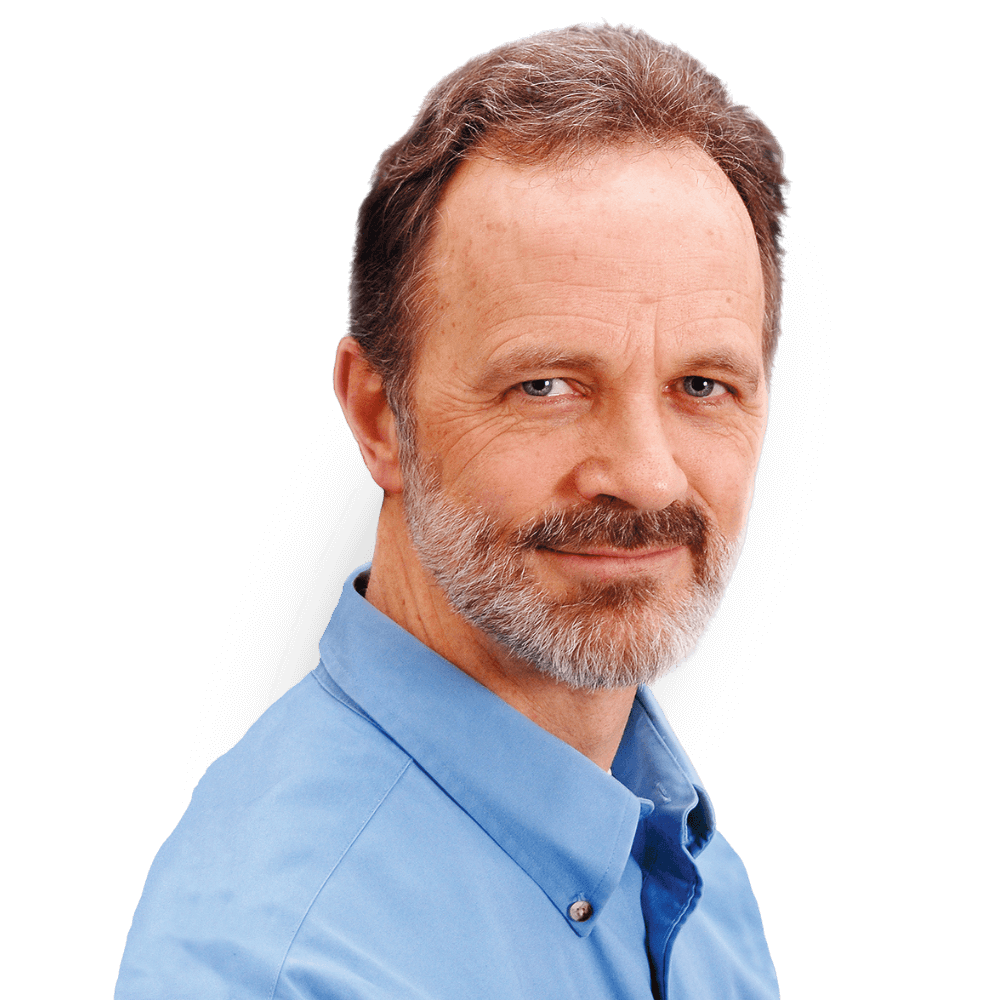
Get personal help to improve your health
and vitality
Conclusion
Dr. Levine describes trauma as the most avoided, ignored, denied, misunderstood, and untreated cause of human suffering. So many complicated symptoms and maladies arise out of fear as we try to block it. And yet, as I often hear in my seminars, “Could the solution be that simple?”
Yes, it can.
As we employ these gentle, natural, and simple modalities, and trust the body’s intelligent, self-healing abilities, we can safely overcome the fears that bind us to non-resolution of trauma. Otherwise, the cure itself is at risk of becoming the enemy, and the war within will continue. When portions of the mind/body are disconnected and at odds with each other, when the rational mind won’t trust the instincts, where fear, anger, shame, or pain can’t resolve, or are chemically suppressed, there will be acting out (violence, abuse), or “acting in” (addictions, self-destructive behavior).
Every man must find his own way to diffuse the tension. So, play with your kids! Get a massage! Go fishing!
But where there are deeper symptoms of PTSD, seek help, rather than thinking you can just “cowboy up.” Men’s conditioning and training lead them to either explode or implode when there is too much stored tension and trauma.
But what about the women? Well, first off, there are female soldiers too. But most women will end up taking on the suffering of the men they love. Statistics show that up to 80% of all women will be victims of some kind of abuse in their lifetime. It’s easier for women to say, “I need help,” and easier for them to find their heart and to forgive. So, men, we must first and always protect the ladies in our life from harm. Then in matters of the heart, it’s OK to let them lead the way.
Modern medicine is a technical marvel and has saved many lives, and drugs have a valuable place, but they are limited and limiting. A paradigm shift in healing is approaching, along with our view of who we are energetically. Our nature and our potential go way beyond the physical, and even our bodies are way beyond a simple series of biochemical switches. In the meantime, like the Hopi, let’s remember that “we are our brother’s keeper,” and we carry each other’s burdens collectively.
If you have experienced trauma and are dealing with any PTSD symptoms, there’s plenty of hope and help. Seek it. If addictions have set in as coping mechanisms, don’t settle for that. You now have the opportunity for probably the most challenging and yet the most rewarding overcoming that we humans can go through. So, consider that reward as your grand victory and go for it!
As Dr. Levine says: “Trauma is about thwarted instincts. Our instinctive energies are not limited to acts of flight or uncontrolled violence. They are our heroic energies. And they can be harnessed.”
Trust in your body’s natural healing wisdom and power!
References
“Potential Breathwork Specializations: Trauma Treatment,” Joy Manné, The Healing Breath Journal, Vol. 5, No. 2
Trauflexive* Breathing, Michael Grant White [*traumas reflected in the breathing], from OptimalBreathing.com/articles/trauflexive.htm
Body, Breath, & Consciousness: A Somatics Anthology, Ian Macnaughton. Chapter: “Breath and Consciousness: Reconsidering the Viability of Breathwork in Psychological and Spiritual Interventions”
Article: “Nature’s Lessons in Healing Trauma,” Dr. Peter A. Levine, at TraumaHealing.com
Recommended Reading
Healing Trauma: A Pioneering Program for Restoring the Wisdom of Your Body, Peter A. Levine, Ph.D. (book & CD; also 6-CD Sounds True Learning Course)
Body, Breath, & Consciousness: A Somatics Anthology, by Ian Macnaugh
The Body Remembers: The Psychophysiology of Trauma and Trauma Treatment, Babette Rothschild
Soul Therapy, Joy Manné
Heal Yourself with Breath, Light, Sound and Water, Denis Ouellette
EFT—Emotional Freedom Techhnique • The Tapping Cure: A Revolutionary System for Rapid Relief from Phobias, Anxiety, Post-Traumatic Stress Disorder and More, Roberta Temes
EMDR: The Breakthrough Therapy for Overcoming Anxiety, Stress, and Trauma, Francine Shapiro
Reclaim Your Light Through the Miracle of Rapid Eye Technology, Ranae Johnson
PSYCH-K: The Missing Peace in Your Life, Robert M. Williams
Wounded Warriors, Colin P. Sisson
Your Drug Might Be Your Problem—How and Why to Stop Taking Psychiatric Medications, Peter R. Breggin, MD & David Cohen, Ph.D.
Talking Back To Prozac: What Doctors Aren’t Telling You About Today’s Most Controversial Drug, Peter R. Breggin, MD and Ginger Ross Breggin
Toxic Psychiatry: Why Therapy, Empathy and Love Must Replace the Drugs, Electroshock, and Biochemical Theories of the “New Psychiatry,” Peter R. Breggin, MD
Disclaimer: The natural therapies discussed in this article should be pursued through properly trained and certified practitioners. These modalities are intended to complement rather than substitute for proper medical or psychological care. They are tools for personal growth and are not intended for the diagnosis or treatment of any medical or psychological condition.
About Denis
 Denis W. Ouellette, BA, BS, LMT, OBDS, has been a holistic-health practitioner since 1978. He trained with the original breathworkers in the 1980’s, and is a certified Optimum Breathing Development® Specialist through Michael Grant White, creator of OptimalBreathing.com. As a core faculty member at the Optimal Breathing School, he collaborated with Mike to develop Integral Breathwork™, a “new world paradigm” for integrating correct breathing physiology with transformational breathwork.
Denis W. Ouellette, BA, BS, LMT, OBDS, has been a holistic-health practitioner since 1978. He trained with the original breathworkers in the 1980’s, and is a certified Optimum Breathing Development® Specialist through Michael Grant White, creator of OptimalBreathing.com. As a core faculty member at the Optimal Breathing School, he collaborated with Mike to develop Integral Breathwork™, a “new world paradigm” for integrating correct breathing physiology with transformational breathwork.
Denis has facilitated thousands of private and group breathwork sessions. He practices breathwork and bodywork in Livingston and Bozeman, Montana. He conducts ongoing Integral Breathwork Seminars. Check the schedule at IntegralBreathwork.com (home also of his bimonthly eZine at NaturalLifeNews.com). Contact Denis through the website. His seminal book on natural healing is titled “Heal Yourself with Breath, Light, Sound and Water,” available on the website (where you can download the first five chapters for free), and through Amazon.



